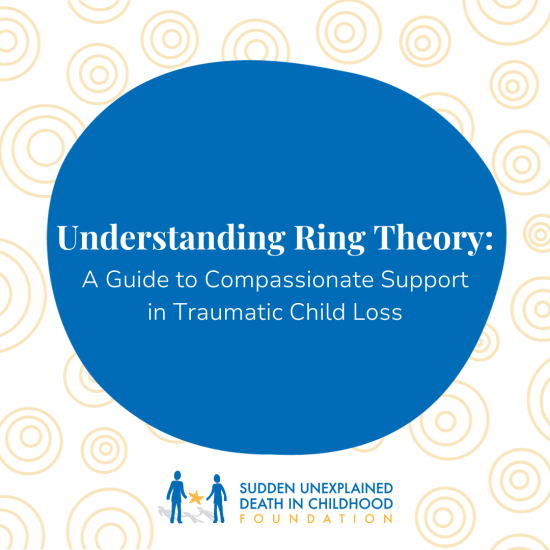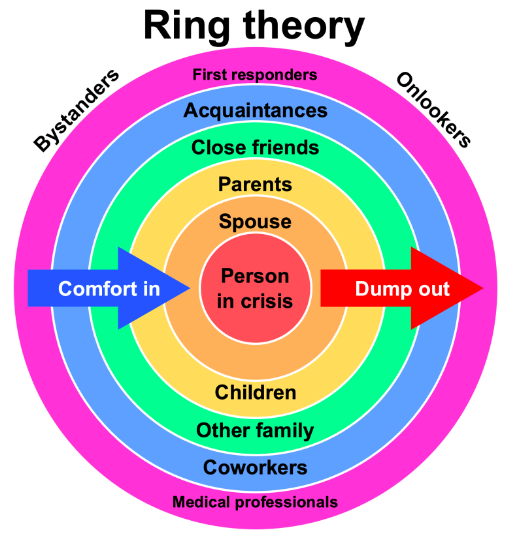20 Nov Understanding Ring Theory: A Guide to Compassionate Support in Traumatic Child Loss

Written by: Amanda Brindle, LSW, Associate Manager of Family Services
Losing a child is one of the most profound and devastating experiences a parent can endure. The emotional whirlwind that follows can be overwhelming, leaving families in need of support and understanding. This is where the concept of Ring Theory comes into play, offering a practical framework for navigating the complex web of emotions and relationships that surround the traumatic loss of a child.
What is Ring Theory?
Ring Theory, also known as the “Circle of Support,” is a model developed by clinical psychologist Susan Silk and Barry Goldman. It’s designed to help individuals provide the best support during times of crisis, such as the loss of a child. At its core, Ring Theory revolves around a simple yet profound principle: “Comfort In, Dump Out.”

The Center of the Ring
In the context of child loss, the grieving parent(s) are at the center of the ring. Their grief and emotional well-being should be the primary focus of support. The trauma and pain they experience are at the core of the circle.
The Next Ring Outward
The next ring outward consists of immediate family members and close friends who are intimately connected to the grieving parent(s). Their role is to provide support, empathy, and comfort. They are there to listen, offer a shoulder to cry on, and create a safe space for the grieving parents to express their emotions.
The Rings Beyond
As we move further out from the center, we encounter friends, extended family members, colleagues, and acquaintances. In these outer rings, the principle of “Dump Out” becomes essential. Individuals in these outer rings should avoid burdening those closer to the center with their own grief, concerns, or emotions. Instead, they should seek support from their own networks and offer only comfort and assistance to those closer to the center.
Applying Ring Theory to Child Loss
Understanding and applying Ring Theory in the context of traumatic child loss is essential for providing the best support to grieving families. Here’s how it applies:
Grieving Parent(s): The loss of a child is a deeply personal and agonizing experience. Support providers should acknowledge their grief, listen without judgment, and be there to offer comfort and empathy; becoming a safe haven for their emotions.
Immediate Family and Close Friends: These individuals play a pivotal role in providing emotional support to the grieving parent(s). They must be attentive to the parents’ needs, offering a compassionate ear and assistance with practical matters.
Outer Circles: Colleagues, acquaintances, and extended family members should adhere to the principle of “Dump Out.” While they feel the impact of the loss, they should seek their own support networks for sharing their emotions and concerns. Their role is to provide practical assistance, like meals, childcare, or any other support that helps ease the burden on the grieving parent(s). It is also helpful to be mindful of the grieving family’s need for space and time. Respect the parent(s)’ decisions and allow them to grieve in their own way.
Ring Theory can be a valuable tool for understanding and providing compassionate support in the traumatic loss of a child. It helps ensure that the grieving process is as gentle as possible, with the focus on the needs of those at the center of the circle. The goal of a support provider is to offer a safe space for grieving parent(s) and help them navigate the complex emotions that come with the loss of a child.



